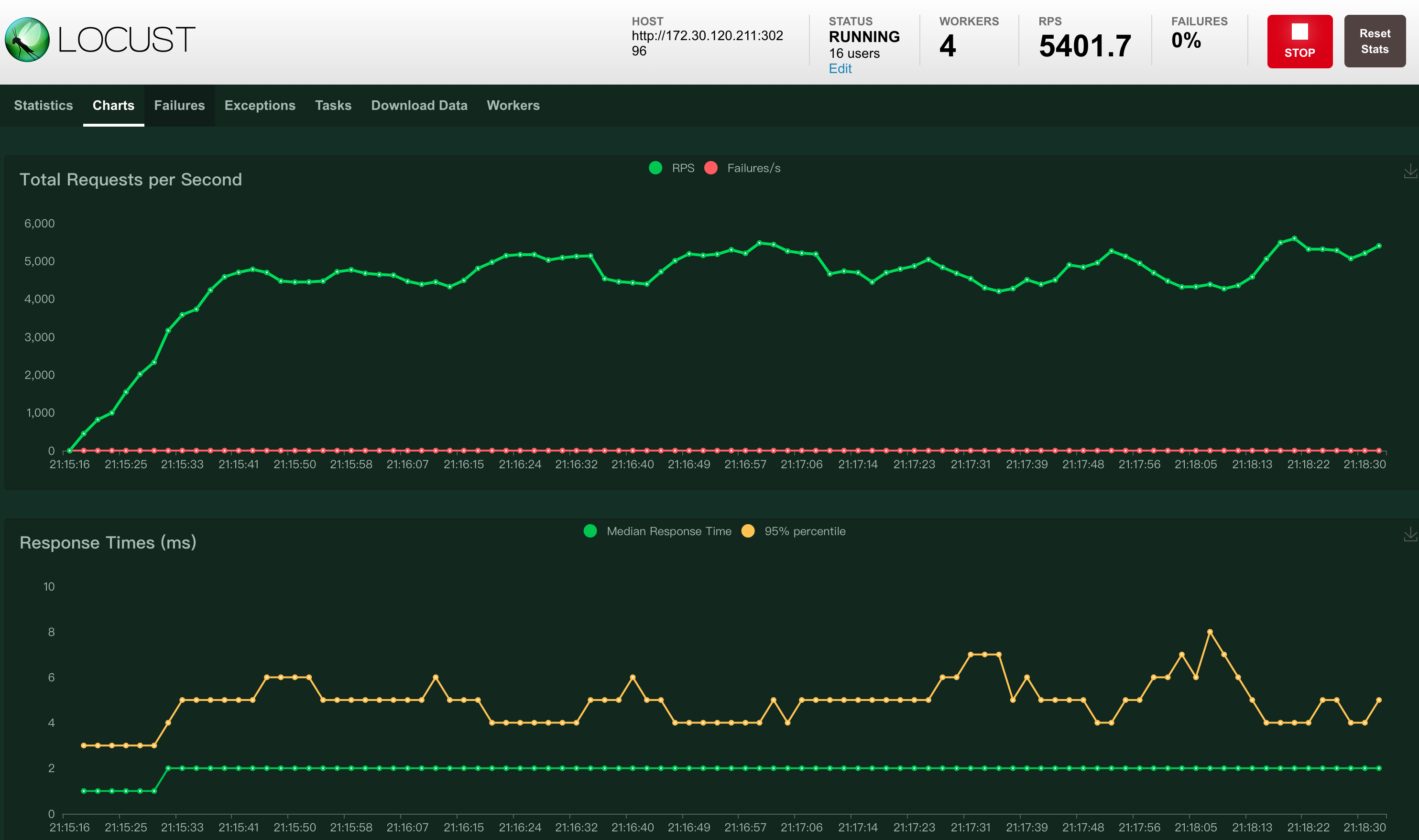Cloud Native Gateway Throughput Test
Gateway Load Test Report
This article introduces the performance of the DCE 5.0 Cloud-Native Gateway in different scenarios, enabling you to configure appropriate resources for the gateway based on your needs.
Test Environment¶
Before starting the test, it is necessary to deploy DCE 5.0, download and install the testing tool and prepare stress-testing machines.
| Object | Role | Description |
|---|---|---|
| DCE 5.0 Cloud-Native Gateway | Test Object | Deployed in master-slave mode, located at: 172.30.120.211 |
| Locust | Testing Tool | Running in a 1+4 master-slave distributed mode, with four stress-testing machines' resource configurations at 8 cores and 8 G |
| Nginx | Demo service for testing gateway performance | Accessed through DCE 5.0 Cloud-Native Gateway, access address: http://172.30.120.211:30296/ |
| contour | Control plane of DCE 5.0 Cloud-Native Gateway | Version 1.23.1 |
| envoy | Data plane of DCE 5.0 Cloud-Native Gateway | Version 1.24.0 |
| Global Management | Components that DCE 5.0 Cloud-Native Gateway depends on | Version 0.12.1 |
| Container Management | Components that DCE 5.0 Cloud-Native Gateway depends on | Version 0.13.1 |
| Microservice Engine | Components that DCE 5.0 Cloud-Native Gateway depends on | Version 0.15.1 |
Performance Indicators¶
- Throughput (RPS): The number of requests processed per second. Combined with CPU utilization, it determines the maximum number of concurrent requests that can be processed per second under a specific resource configuration for the DCE 5.0 Cloud-Native Gateway. The higher the throughput, the better the gateway performance.
- CPU utilization: The CPU usage of the DCE 5.0 Cloud-Native Gateway instance when processing a specific number of concurrent requests during the test. When the CPU usage exceeds 90%, it is considered to be approaching full load, and the throughput (RPS) at this point is the maximum number of concurrent requests that can be processed normally with the current configuration.
Test Script¶
-
Run the following command on the Locust Web machine to collect the stress-testing results:
-
Run the following command on the Locust stress-testing machine to simulate user access and perform stress testing:
-
Stress-testing script
gateway-external-nginx.py:
Test Nginx Throughput: Three Replicas, No Resource Limitations¶
Test Results¶
| Number of Concurrent Users | Throughput (RPS) | CPU Utilization | Analysis |
|---|---|---|---|
| 4 | 4300 | 58%——70% | The resources are not fully utilized, theoretically capable of handling more requests. |
| 8 | 5700 | 77%——83% | A small amount of resources is still idle, and increasing the number of concurrent requests can be attempted to test the throughput limit. |
| 12 | 6700 | 90%——95% | Only a very small amount of resources is idle, CPU is close to full load, considered to have reached the maximum throughput limit. |
Success
Based on the above, when three replicas of the service are deployed with no resource usage limitations, the DCE 5.0 Cloud-Native Gateway can handle approximately 6,000 to 7,000 concurrent requests, which is excellent performance compared to similar products.
Test Process Screenshots¶
-
Concurrent Users = 4
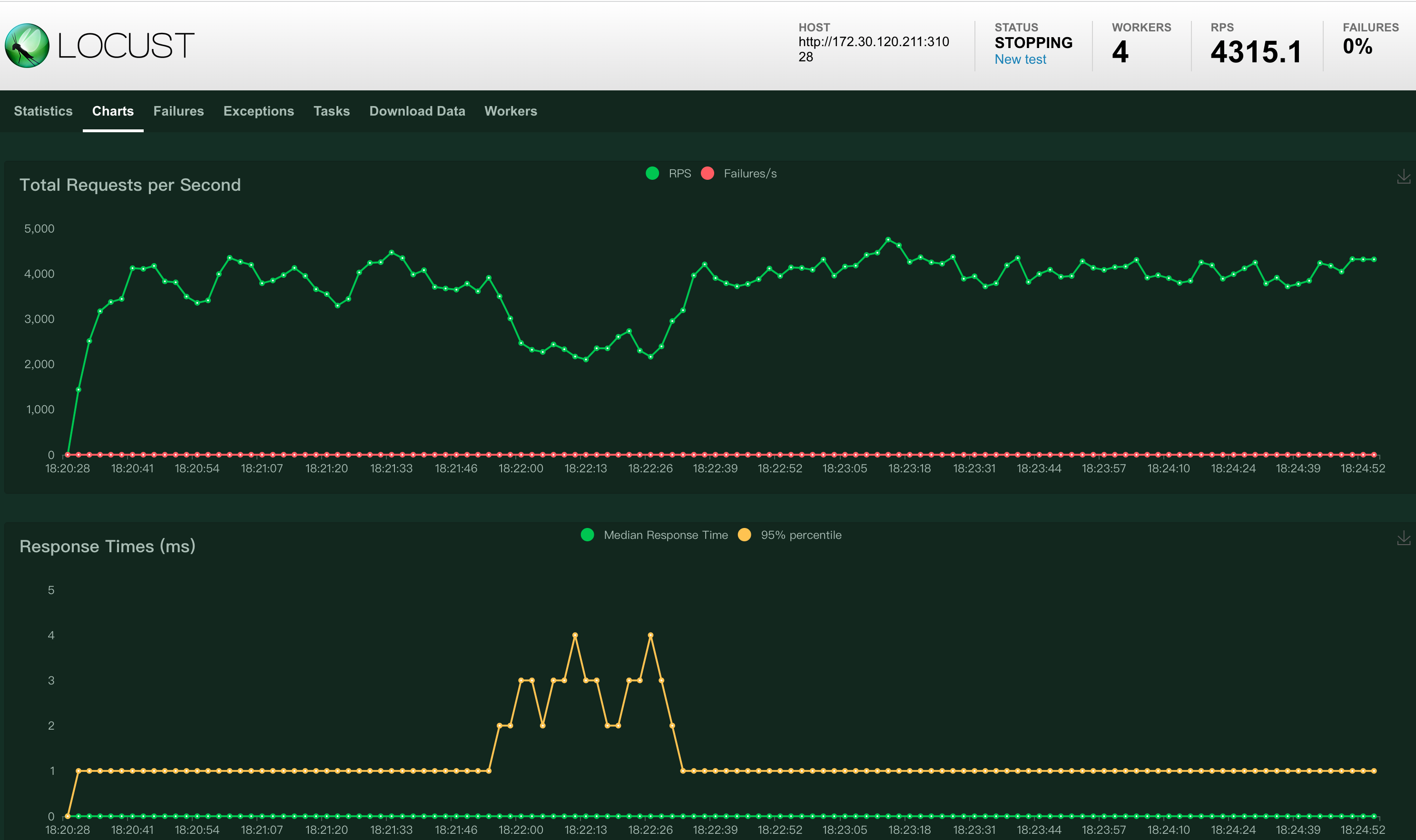

-
Concurrent Users = 8
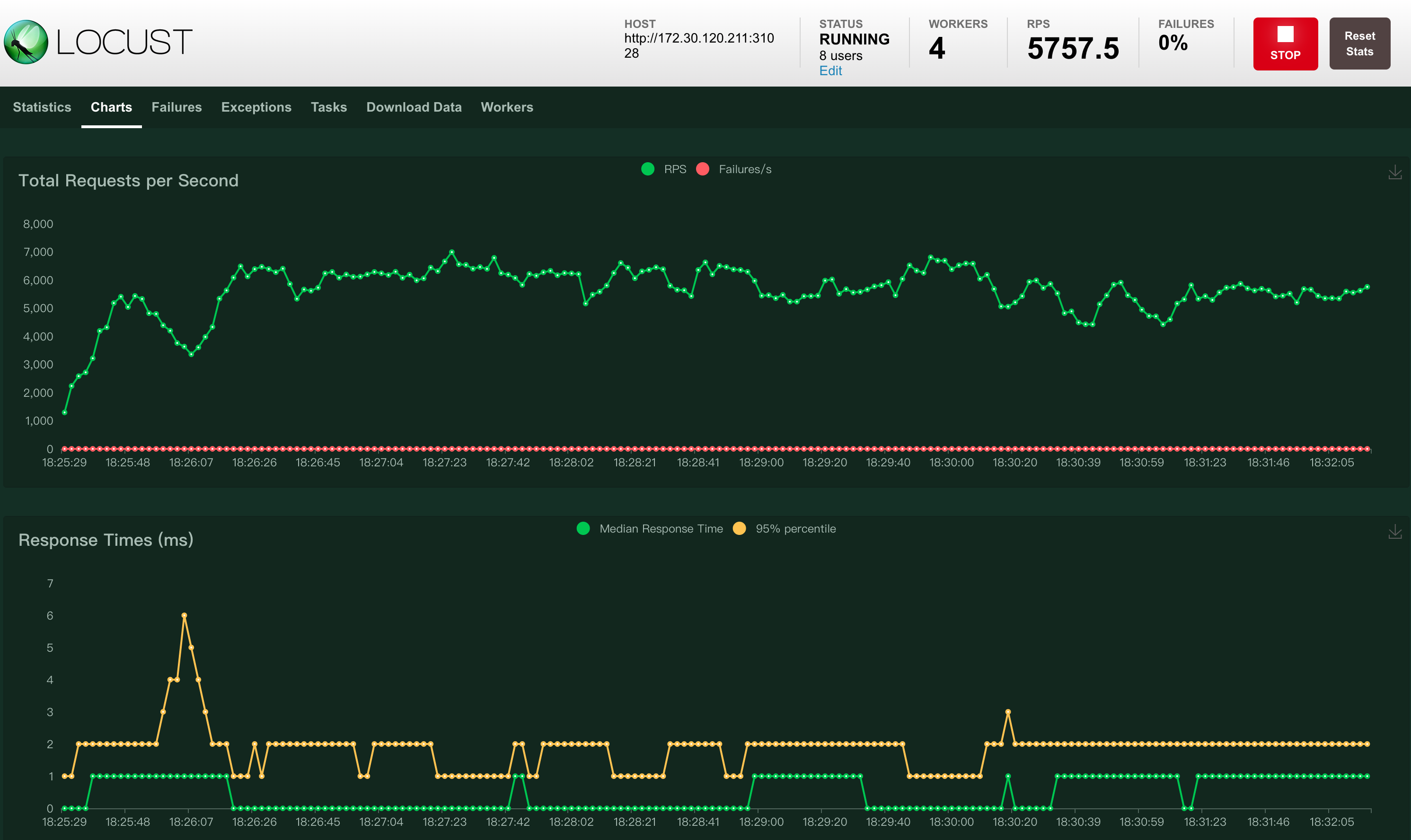

-
Concurrent Users = 12
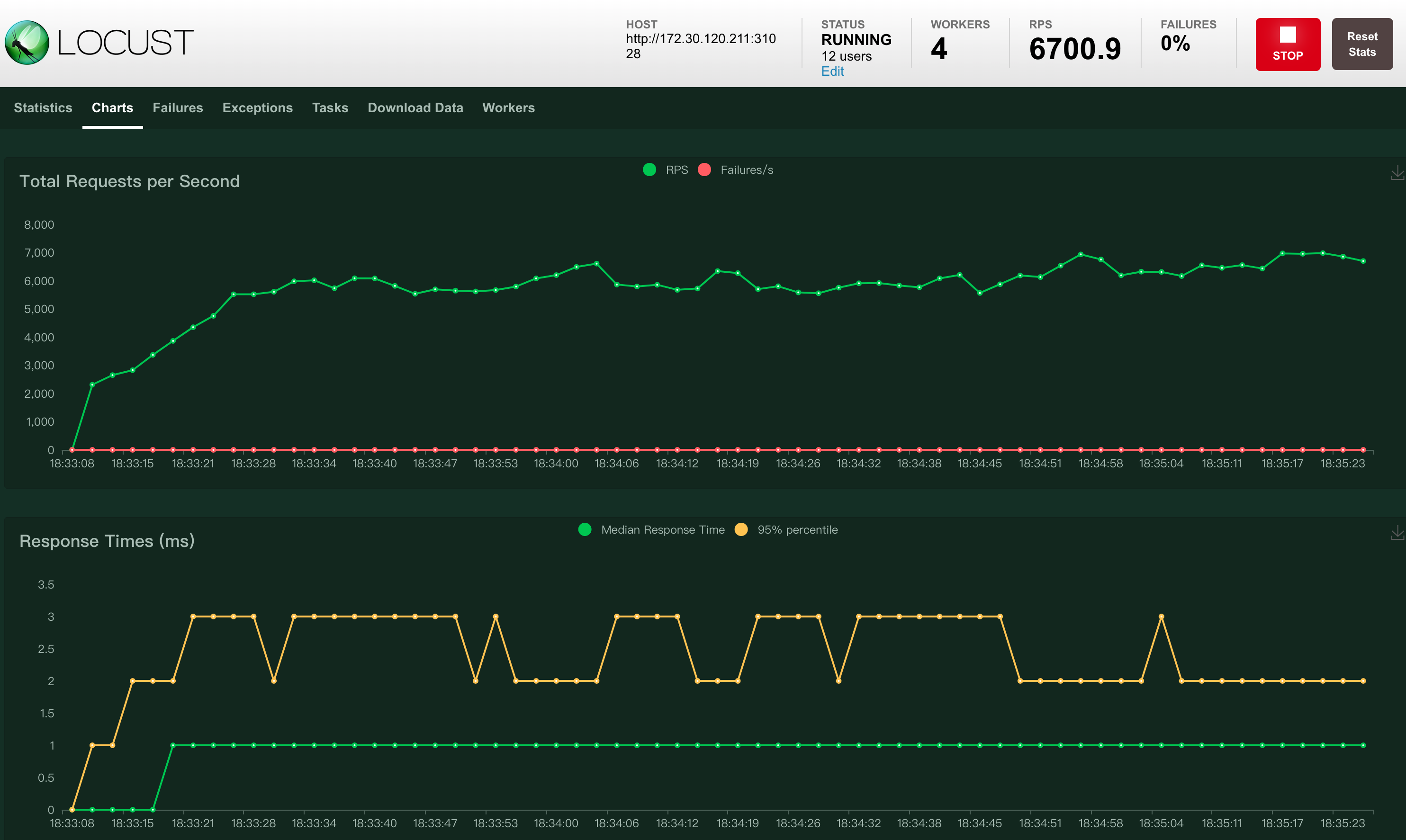

Investigating the Impact of Contour Resource Configuration on Envoy Performance¶
The DCE 5.0 Cloud-Native Gateway is further developed and optimized based on the open-source projects Contour and Envoy. Contour acts as the control plane of the gateway, and Envoy acts as the data plane.
When creating the DCE 5.0 Cloud-Native Gateway, the system requires that the gateway be configured with no less than 1 core and 1 G of resources. Therefore, in this test, the minimum resource limit for Contour is set to 1 core and 1 G.
To better demonstrate the impact of Contour's resource configuration, Envoy's resource limit is set to 6 cores and 3 G to ensure that Envoy itself always has high performance and does not affect the test results due to insufficient resources.
To ensure normal resource load on the stress-testing machine, the Locust users are set to 8 by default.
Test Results¶
| Contour Resource Specification | Throughput (RPS) | CPU Utilization | Analysis |
|---|---|---|---|
| 1 core 1G | 3700 | 53%——69% | Contour's resource configuration ranges from 1 core 1 G to 2 cores 1 G, and then to 3 cores 2 G, but the maximum throughput of the gateway has been maintained at around 3700, with a fluctuation range of only 100. CPU utilization has also remained at around 50% to 70%, with very small overall changes. |
| 2 cores 1G | 3600 | 55%——72% | |
| 3 cores 2G | 3800 | 57%——69% |
Success
This indicates that Contour's resource configuration has almost no impact on Envoy's performance.
Test Process Screenshots¶
-
contour: 1 core 1 G
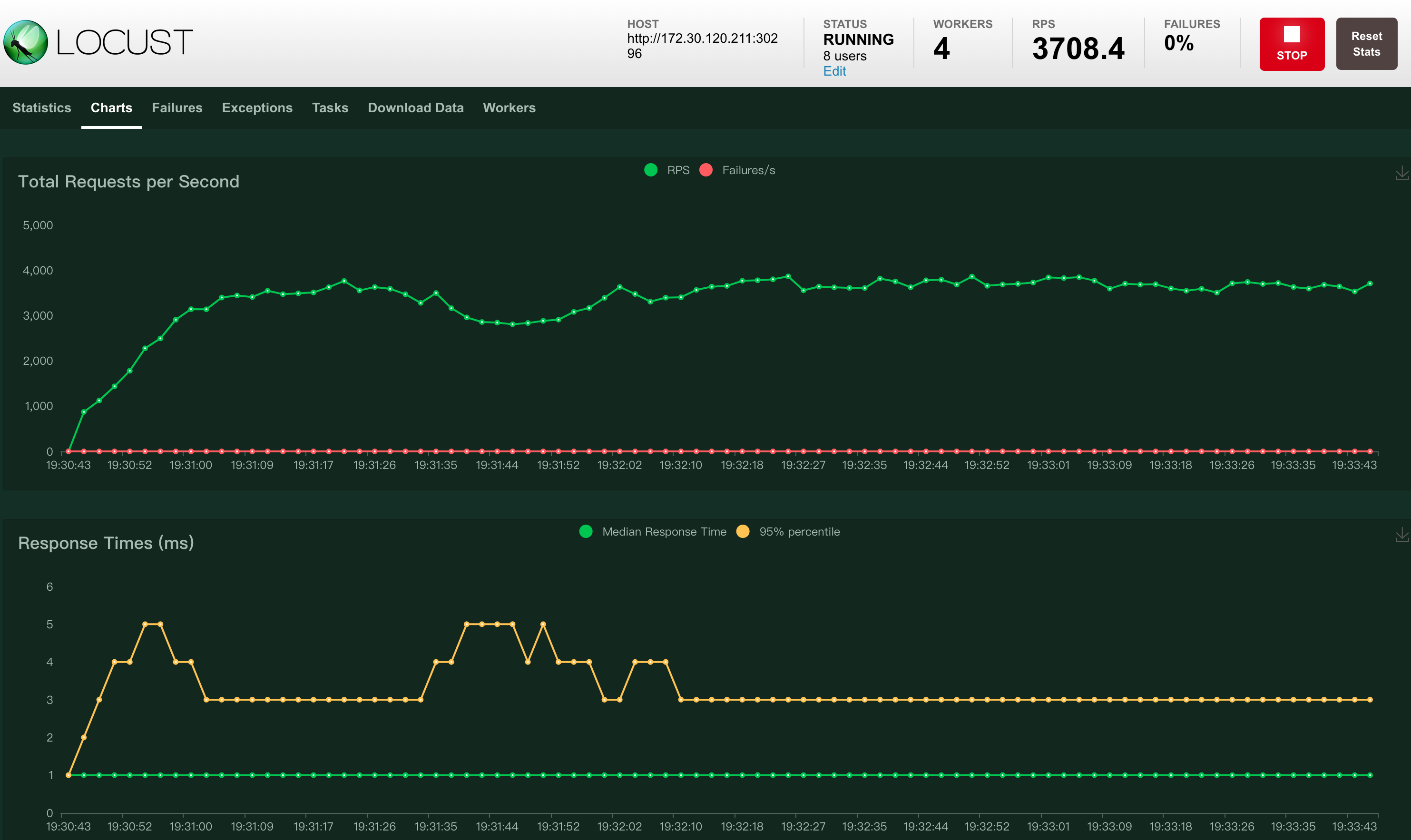

-
contour: 2 core 1 G
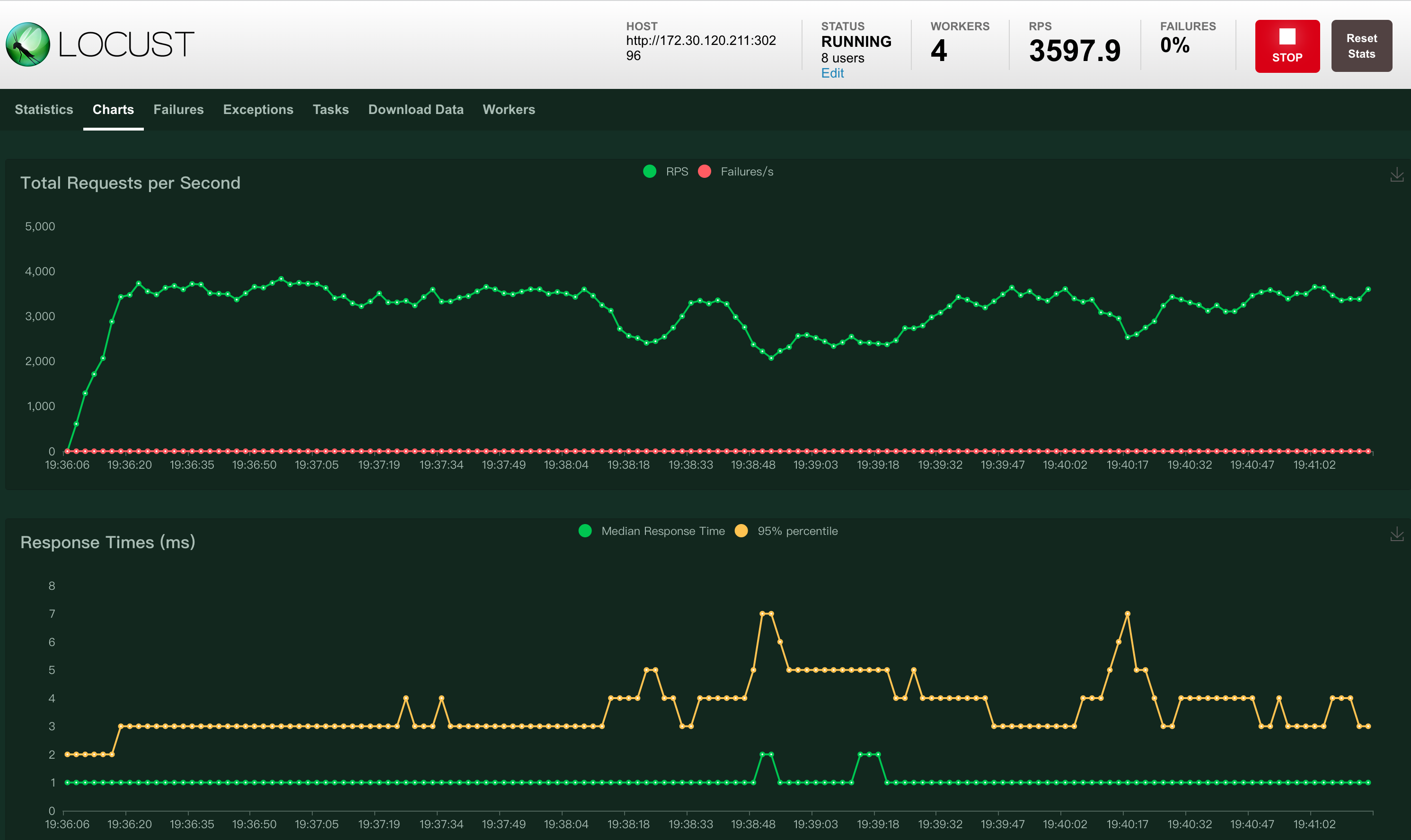

-
contour: 3 core 2 G
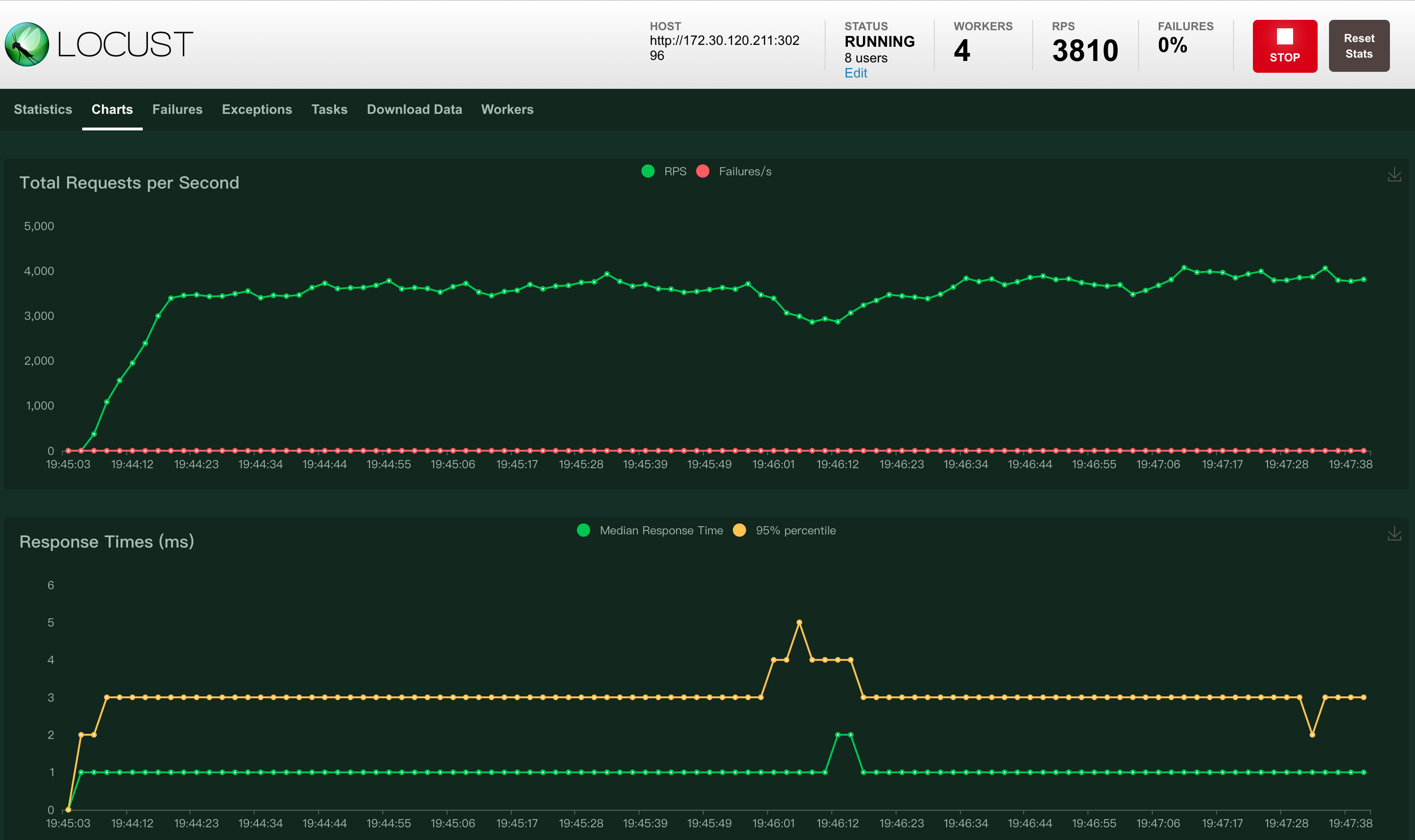

Investigating the Impact of Envoy Resource Configuration on Throughput¶
Envoy is fixed to 1 replica, Contour is configured with 1 core and 1 G, and the tested service Nginx is configured with 3 replicas with no resource usage limitations.
Test Results¶
| Envoy Resource Specification | Concurrent Users | Throughput (RPS) | CPU Utilization | Analysis |
|---|---|---|---|---|
| 1 core 1G | 4 | 1016 | 18%——22% | When Envoy's resource configuration remains unchanged, even if the number of concurrent users doubles, the gateway throughput does not change much. |
| 8 | 1181 | 19%——20% | ||
| 16 | 1090 | 19%——22% | ||
| 2 cores 1G | 4 | 2103 | 28%——41% | With 4 concurrent users, when the resource configuration is increased from 1 core to 2 cores, the throughput also increases by about 1000. |
| 8 | 2284 | 38%——47% | ||
| 3 cores 1G | 8 | 3355 | 59%——70% | With 8 concurrent users, when the resource configuration is increased from 1 core to 3 cores, the throughput also increases by about 2000. |
| 12 | 3552 | 52%——59% | ||
| 4 cores 2G | 8 | 3497 | 58%——80% | With 12 concurrent users, when the resource configuration is increased from 3 cores to 5 cores, the throughput also increases by about 1000. |
| 12 | 4250 | 78%——86% | ||
| 5 cores 2G | 8 | 3573 | 60%——81% | |
| 12 | 4698 | 68%——78% | ||
| 6 cores 2G | 12 | 4574 | 78%——85% | When configured with 6 cores and 2 G, the throughput is about 5400, and CPU usage also reaches over 90%, close to full load. |
| 16 | 5401 | Above 90% |
Success
In conclusion:
- Envoy's CPU configuration is the determining factor for throughput.
- Under current stress test resources, the throughput of accessing Nginx through Envoy can reach over 80% of directly accessing Nginx.
Test Process Screenshots¶
Envoy 1 core 1G¶
-
Concurrent Users = 4


-
Concurrent Users = 8


-
Concurrent Users = 16
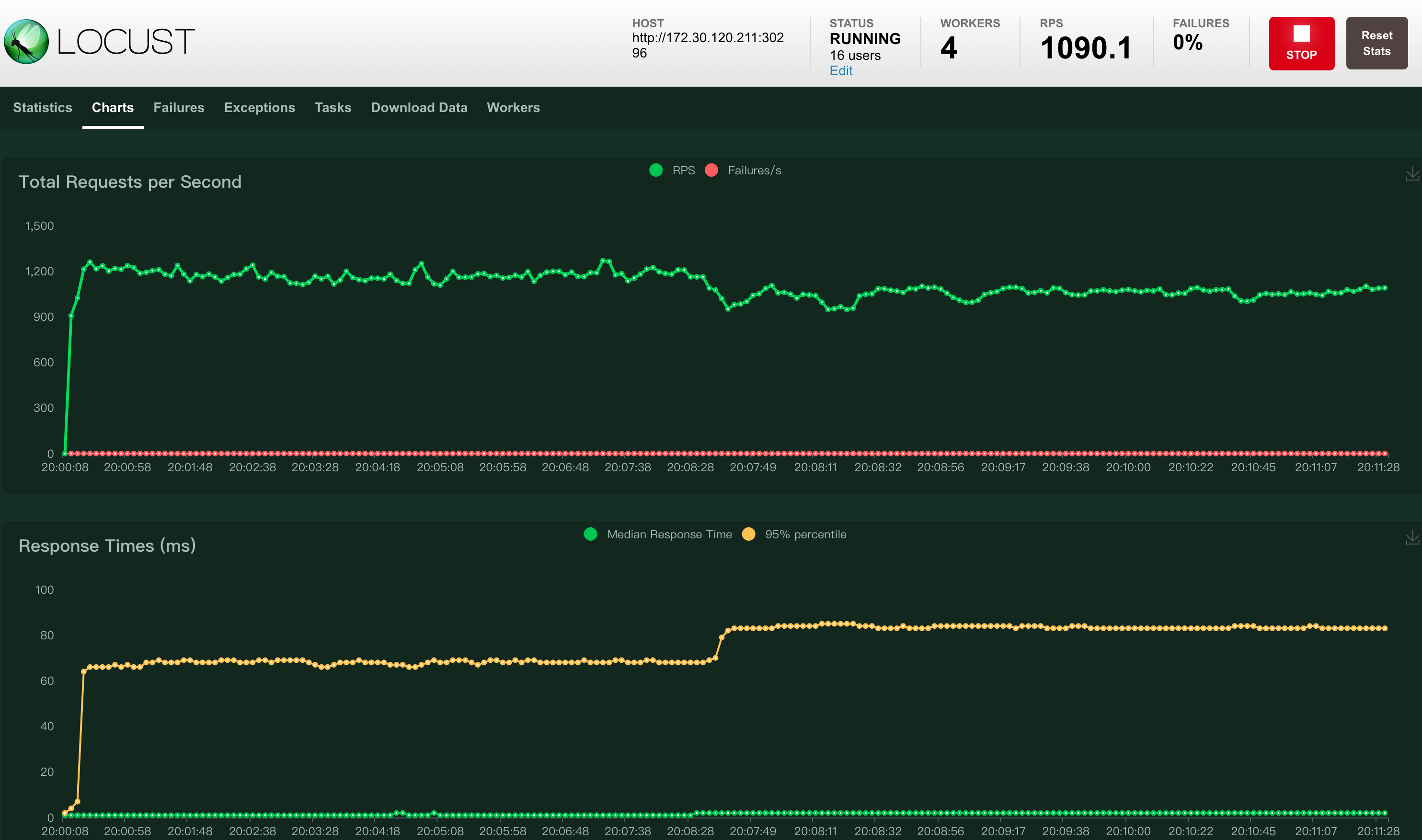

Envoy 2 core 1 G¶
-
Concurrent Users = 4


-
Concurrent Users = 8
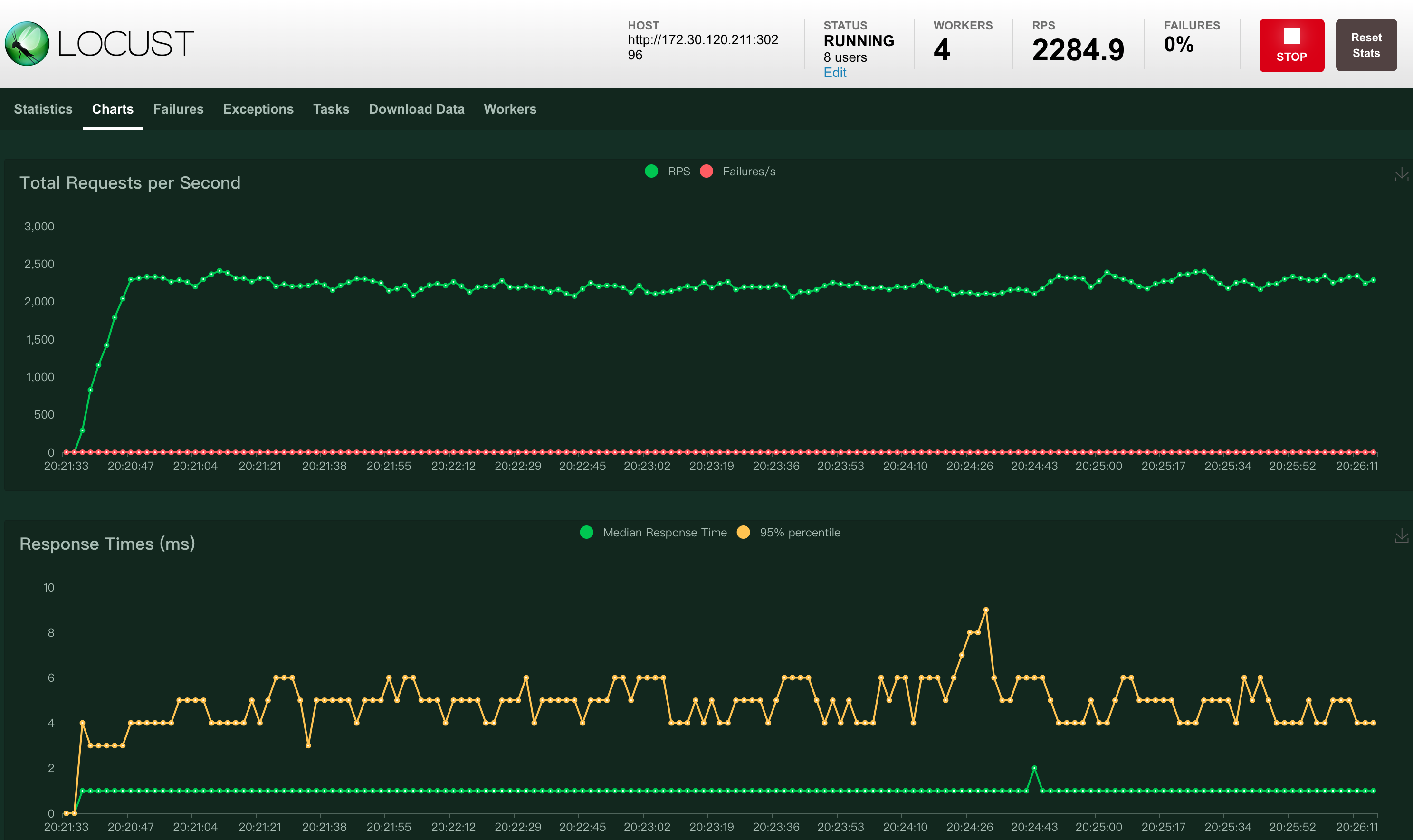

Envoy 3 core 1 G¶
-
Concurrent Users = 8


-
Concurrent Users = 12
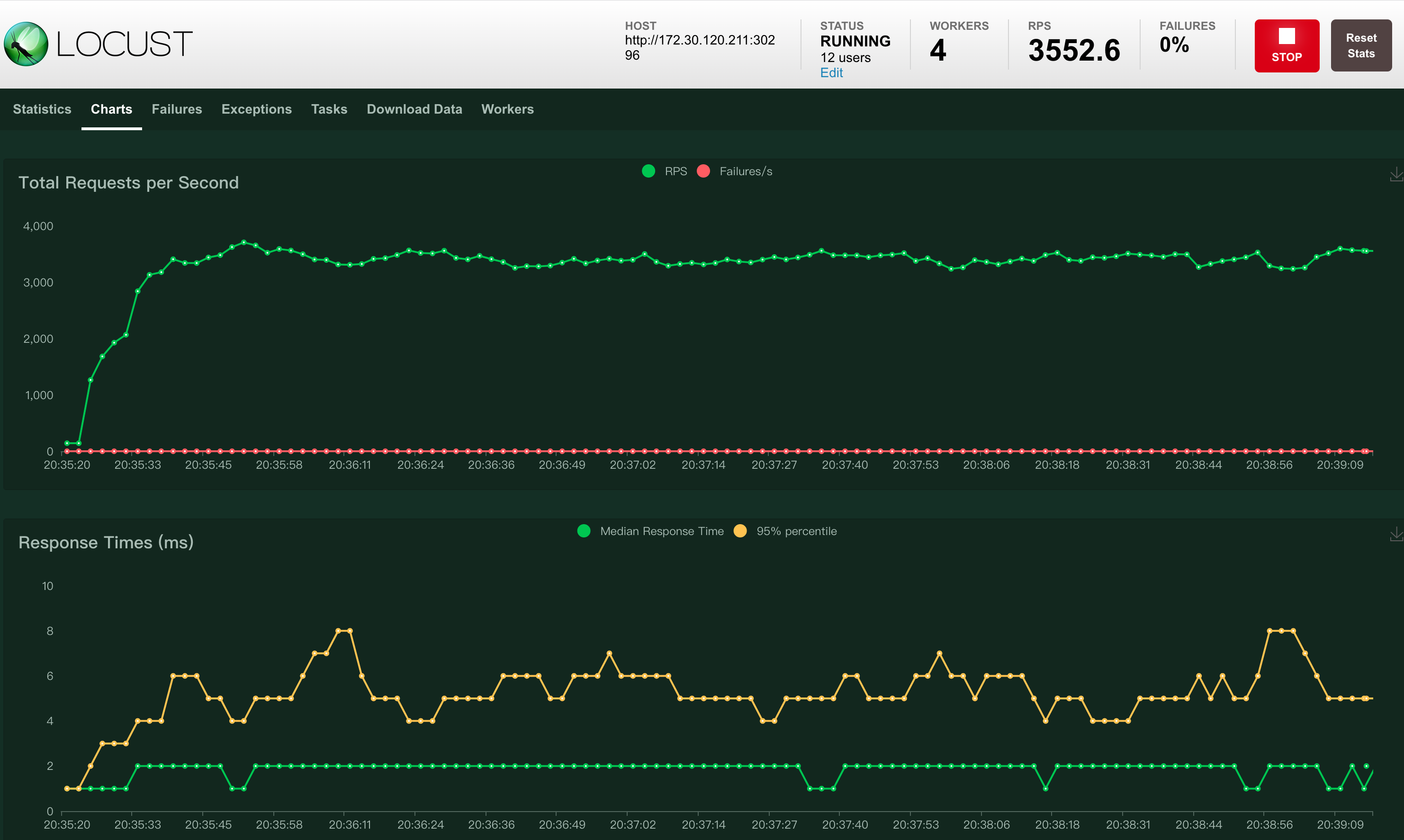

Envoy 4 core 2 G¶
-
Concurrent Users = 8
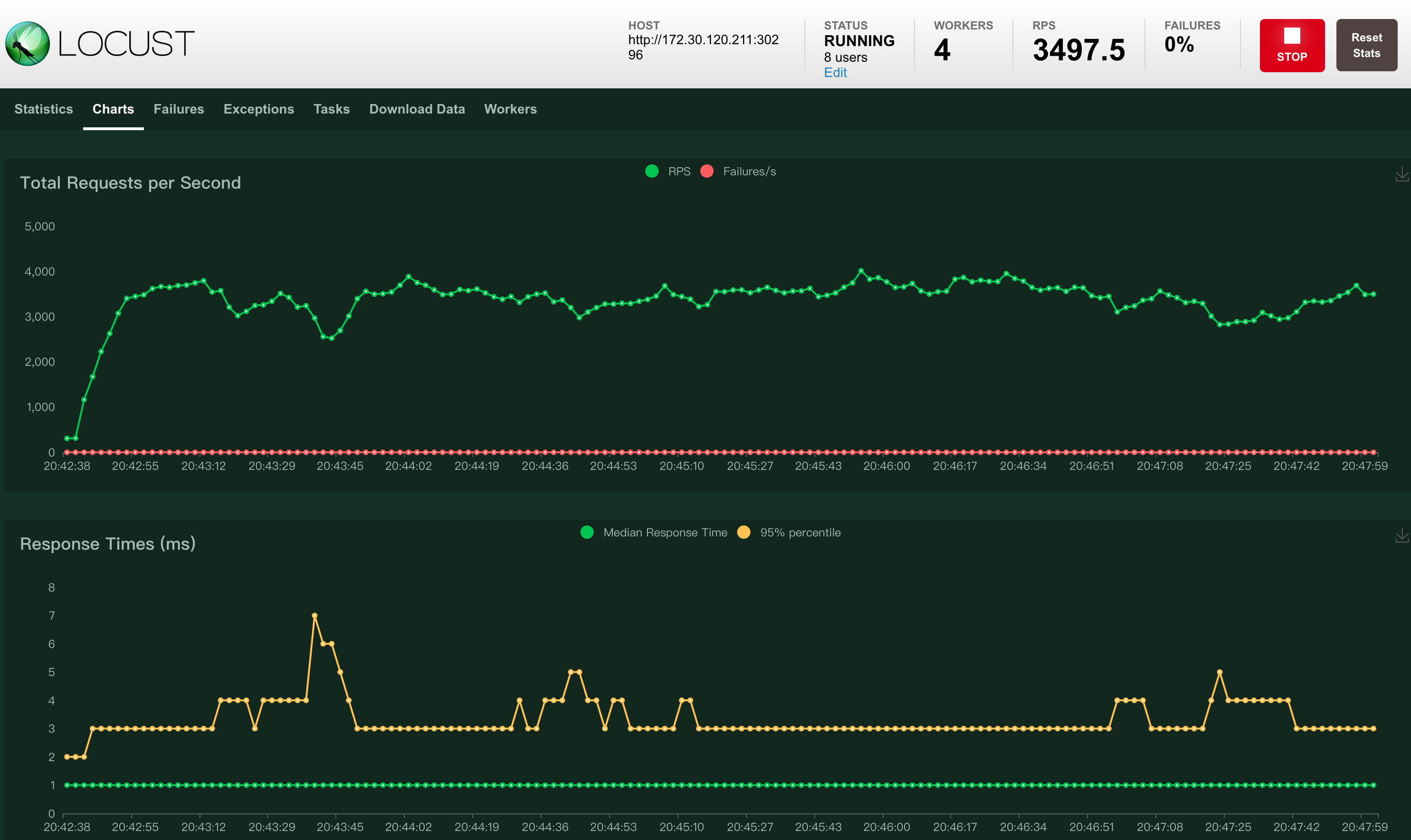

-
Concurrent Users = 12
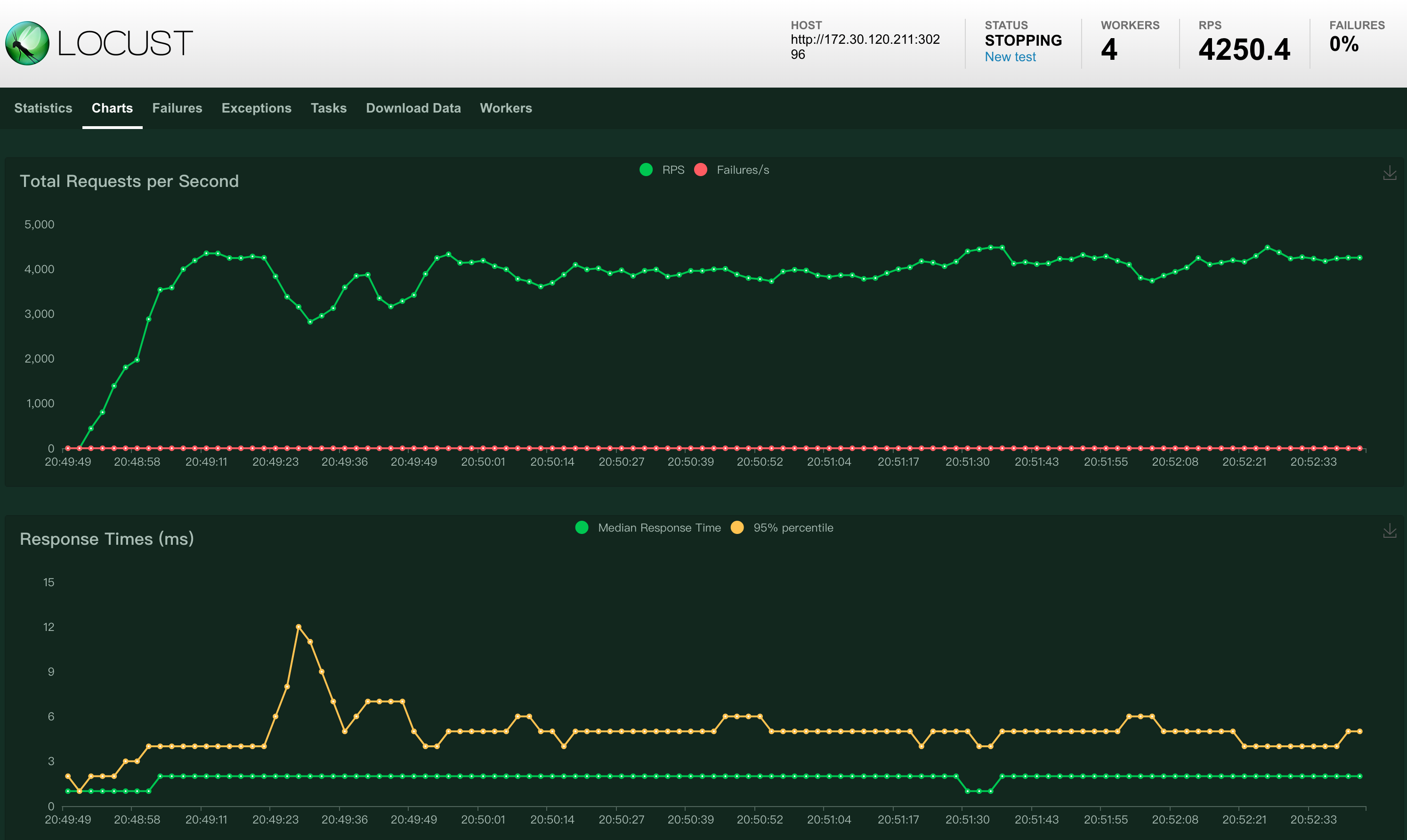

Envoy 5 core 2 G¶
-
Concurrent Users = 8


-
Concurrent Users = 12


Envoy 6 core 2 G¶
-
Concurrent Users = 12


-
Concurrent Users = 16
